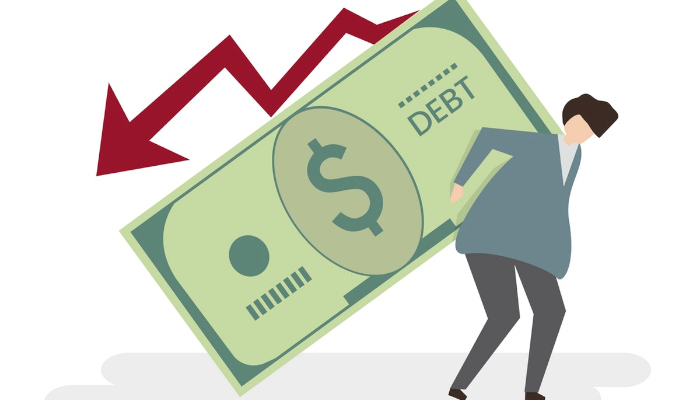
Debt Consolidation vs Bankruptcy: Choosing the Best Option in Alberta
 When faced with overwhelming debt, many individuals in Alberta find themselves at a crossroads, trying to decide between Calgary Debt Consolidation Alberta or bankruptcy. Both options offer a way out of financial distress but differ significantly in their processes and long-term impacts. This post will explore these options, their benefits, and potential drawbacks, helping you make an informed decision.
When faced with overwhelming debt, many individuals in Alberta find themselves at a crossroads, trying to decide between Calgary Debt Consolidation Alberta or bankruptcy. Both options offer a way out of financial distress but differ significantly in their processes and long-term impacts. This post will explore these options, their benefits, and potential drawbacks, helping you make an informed decision.
Understanding Debt Consolidation
Debt consolidation involves combining multiple debts into a single loan, typically with a lower interest rate. This can make managing debt easier, as you only have one payment to worry about each month.
Benefits of Debt Consolidation
- Simplified Payments: Instead of juggling multiple due dates and interest rates, you make one consistent monthly payment.
- Lower Interest Rates: Consolidation loans often come with lower interest rates compared to credit cards and other high-interest debts.
- Improved Credit Score: Consistently making on-time payments can improve your credit score over time.
- Reduced Stress: Managing a single debt can alleviate the stress and confusion of handling multiple accounts.
Drawbacks of Debt Consolidation
- Qualification Requirements: Not everyone qualifies for Edmonton Debt Consolidation Alberta, particularly those with poor credit scores.
- Longer Repayment Terms: While monthly payments might be lower, extending the repayment period can mean you pay more in interest over time.
- Risk of Accumulating More Debt: If spending habits aren’t adjusted, there’s a risk of accruing new debt on top of the consolidated loan.
Understanding Bankruptcy
Bankruptcy is a legal process designed to help individuals who cannot repay their debts. It offers a fresh start by discharging most debts but comes with significant long-term consequences.
Benefits of Bankruptcy
- Debt Discharge: Bankruptcy can eliminate most unsecured debts, offering a clean slate.
- Immediate Relief: Filing for bankruptcy initiates an automatic stay, which halts collection actions, including wage garnishments and lawsuits.
- Legal Protection: Bankruptcy provides a legal framework to resolve your debts, protecting you from creditors.
- Financial Education: The process includes mandatory credit counseling and debtor education, which can help prevent future financial issues.
Drawbacks of Bankruptcy
- Credit Impact: Bankruptcy severely damages your credit score, remaining on your credit report for up to 7-10 years.
- Asset Liquidation: Depending on the type of bankruptcy, you may have to sell some assets to repay creditors.
- Stigma: There can be a social stigma attached to filing for bankruptcy, affecting personal and professional relationships.
- Limited Future Borrowing: Securing loans or credit post-bankruptcy can be challenging and come with higher interest rates.
Comparing Debt Consolidation and Bankruptcy
When deciding between Alberta Debt Consolidation CA and bankruptcy, consider the following factors:
- Debt Amount: For manageable debt levels, consolidation might be sufficient. For overwhelming debt, bankruptcy could be the more appropriate option.
- Income and Budget: Assess your ability to make consistent payments under a consolidation plan. If you lack sufficient income, bankruptcy might provide a necessary relief.
- Credit Health: If maintaining a better credit score is important, consolidation is preferable. However, if your credit is already damaged, bankruptcy’s impact might be less concerning.
- Long-Term Goals: Consider your future financial goals. Bankruptcy might offer a quicker reset, but at the cost of long-term credit limitations.
- Personal Circumstances: Life events, such as job loss or medical emergencies, can influence the suitability of each option.
The Debt Consolidation Process in Alberta
To consolidate your debt in Alberta, follow these steps:
- Evaluate Your Debts: List all your debts, including interest rates and monthly payments.
- Research Lenders: Look for reputable lenders offering consolidation loans with favorable terms.
- Apply for a Loan: Submit an application with necessary financial documents.
- Pay Off Existing Debts: Use the consolidation loan to pay off your existing debts.
- Make Regular Payments: Ensure you make timely payments on your new loan to avoid further financial issues.
The Bankruptcy Process in Alberta
Filing for bankruptcy in Alberta involves:
- Consult a Licensed Insolvency Trustee (LIT): An LIT can assess your financial situation and determine if bankruptcy is the right option.
- File Bankruptcy Documents: The LIT will help you complete and file the necessary paperwork.
- Attend Credit Counseling: Mandatory counseling sessions help you understand budgeting and credit management.
- Liquidation of Assets: Some assets may be sold to repay creditors.
- Discharge: After fulfilling all requirements, your debts are discharged, and you receive a fresh start.
Making the Decision
Deciding between debt consolidation and bankruptcy is a significant decision that requires careful consideration of your financial situation, long-term goals, and personal circumstances. Consulting with financial advisors or licensed insolvency trustees can provide valuable guidance tailored to your specific needs.
By thoroughly understanding both options, you can choose the path that best aligns with your financial recovery and long-term well-being. Whether you opt for the structured relief of consolidation or the fresh start of bankruptcy, taking proactive steps toward debt management is crucial for reclaiming your financial health in Alberta.